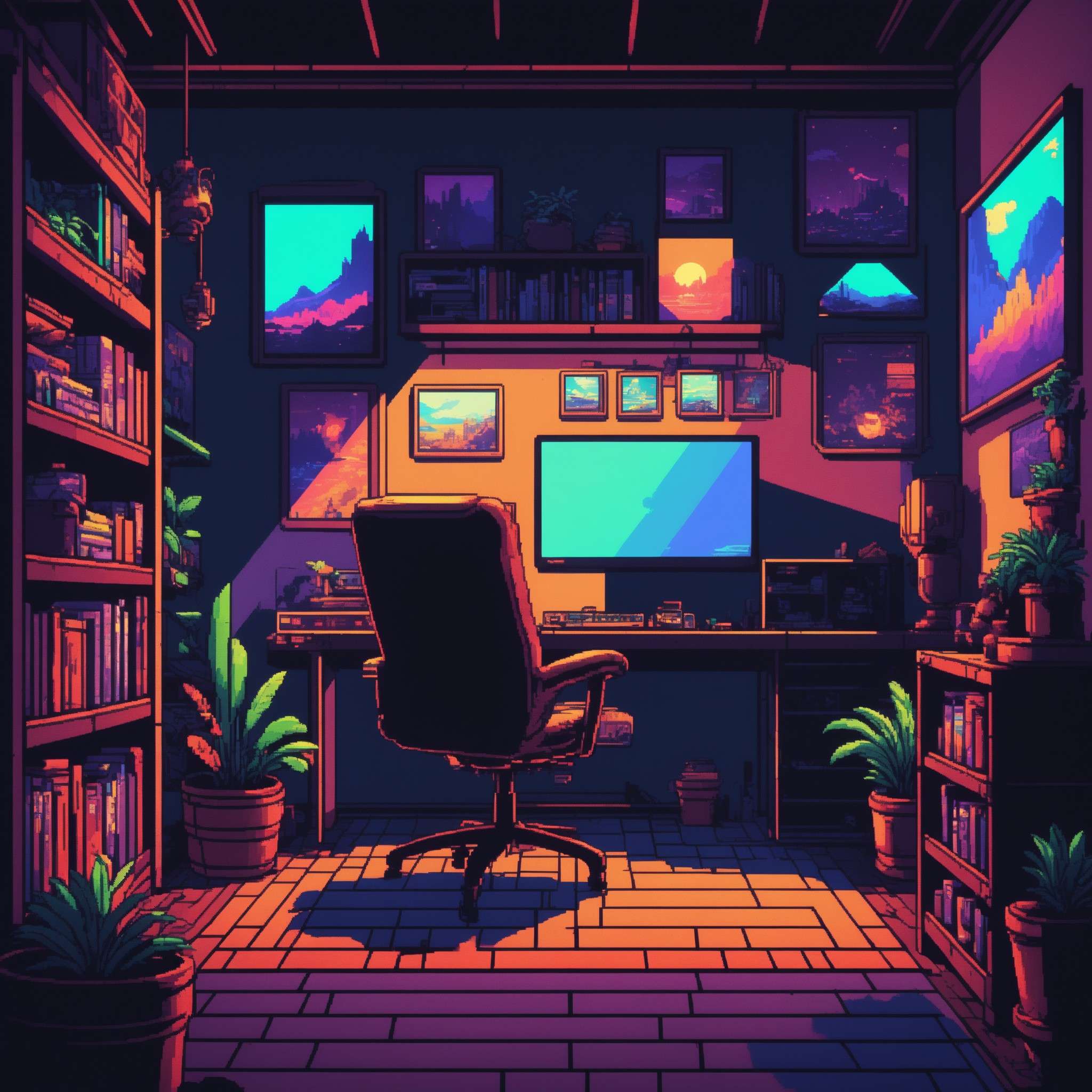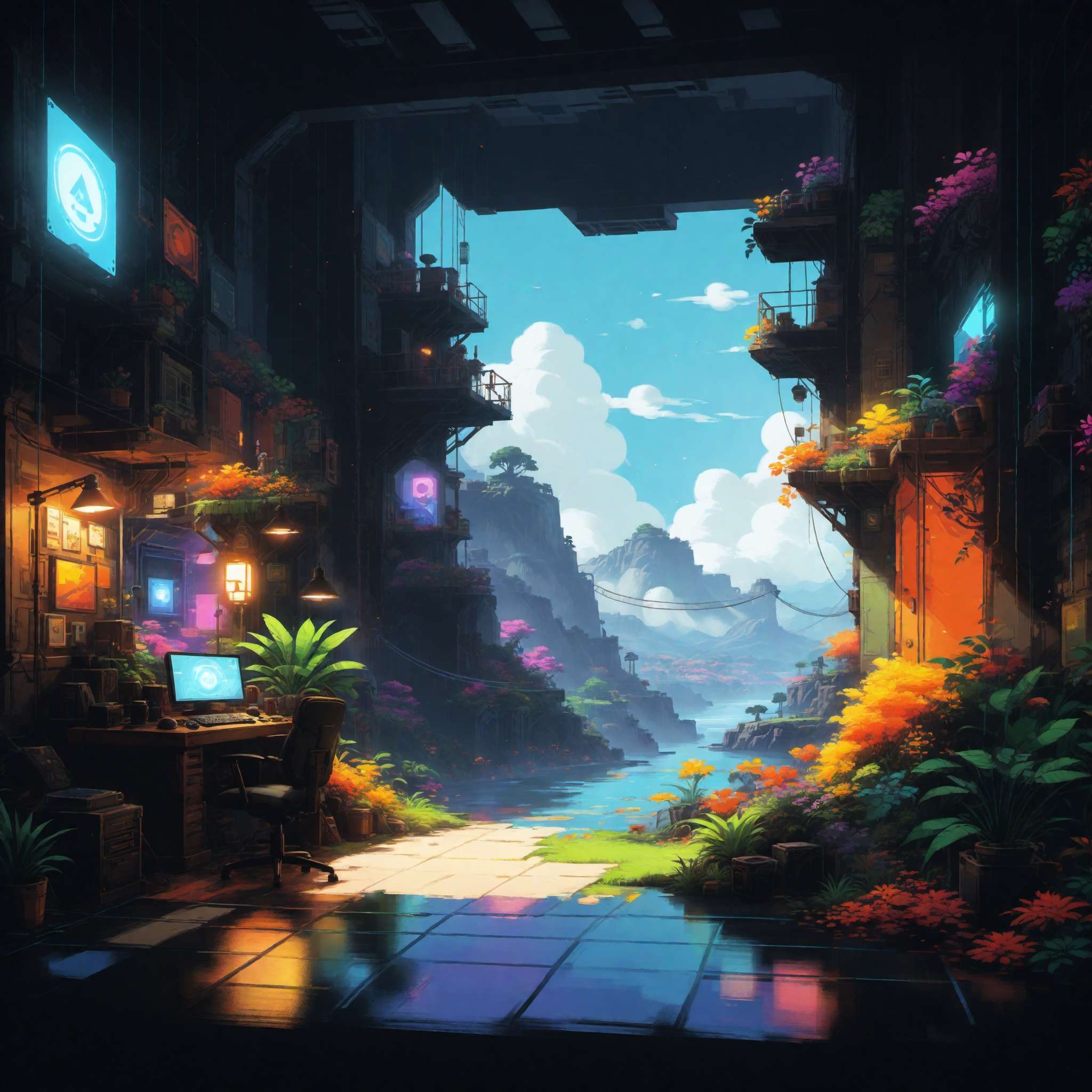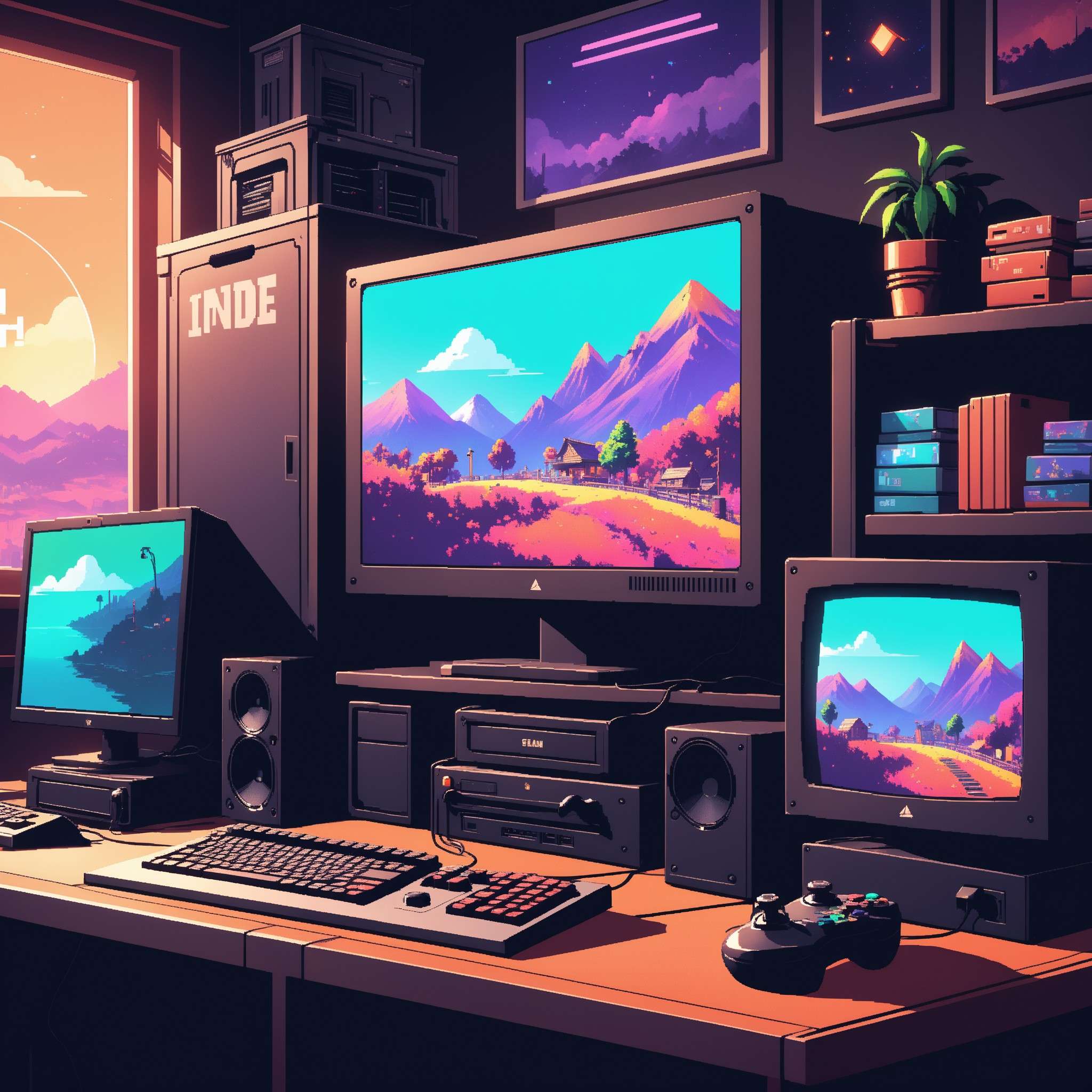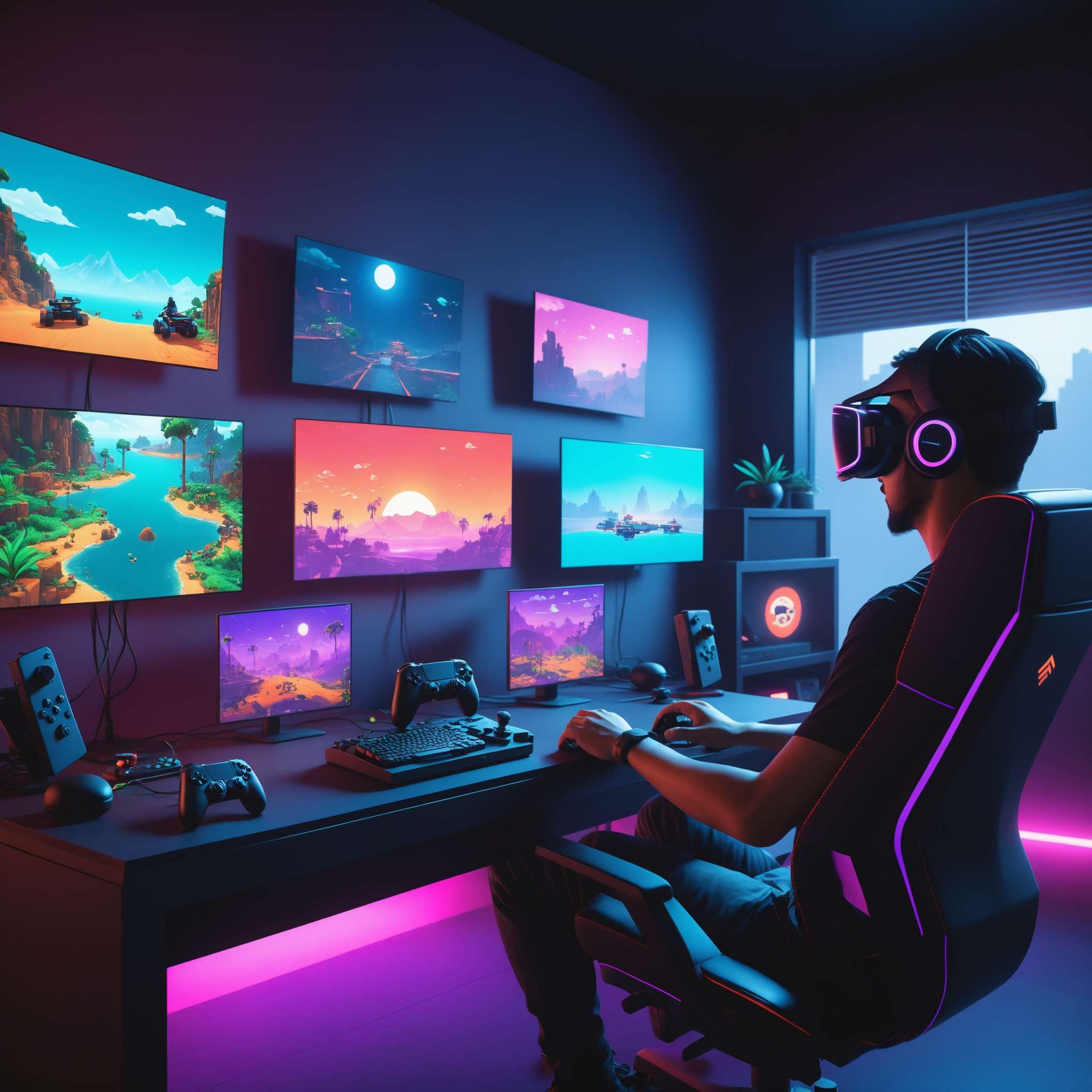Zombie Bunny is Reader-supported and may earn an affiliate commission through links on our site.

Unleashing the Indie Giants: Your Ultimate Guide to the Year’s Best Indie Games
Discover the year's top indie games! Dive deep into captivating worlds of unique gameplay, innovative mechanics, and compelling narratives. #IndieGames #GamingGuide
Explore the fascinating world of indie games in this comprehensive guide, highlighting their impact on the gaming industry, why they matter, and how they’re reshaping the gaming landscape. Delve into the diverse range of genres and styles indie games offer, their innovative mechanics, and their unique ability to tackle diverse themes often overlooked by mainstream titles. This blog post also introduces standout indie titles, developers pushing the boundaries, and how players can support these creative endeavors. Whether you’re a seasoned gamer or just discovering the indie scene, this guide will enhance your appreciation of indie games’ creativity, originality, and the intimate connection they foster between players and game creators.
Introduction: A New Era of Gaming

© Copyright , ZombieBunny.Org
Rise of Indie Games
Indie games have securely cemented their place in the gaming world, breaking the boundaries once defined by big-budget titles. In an industry once dominated by blockbuster franchises, these unique, creative, and often experimental games have carved out their own niche. With their innovative game mechanics, engrossing narratives, and immersive aesthetics, indie games are capturing the hearts of gamers worldwide.
Developed by small and independent teams, these titles are redefining the gaming landscape, proving that you don’t need a massive budget or a large development team to create a captivating gaming experience. From platformers to RPGs, from puzzle games to narrative-driven adventures, indie games offer a diverse range of genres and styles, providing gamers with a refreshing alternative to mainstream titles. The rise of indie games represents a new era of gaming, one that values creativity, originality, and player engagement above all else.
Why Indie Games Matter
Indie games matter for several compelling reasons. They inject the gaming industry with a much-needed dose of creativity and innovation, often breaking from traditional formulas to experiment with new game mechanics, storytelling techniques, and art styles. This makes them a vital force driving the evolution of video games as a medium.
These games also provide a platform for diverse voices and perspectives often overlooked by mainstream games. Indie developers, unrestrained by corporate expectations or market pressures, can tackle topics and themes that big studios shy away from. They can create games that resonate with unique, niche audiences, fostering inclusivity within the gaming community. Furthermore, by supporting indie games, players contribute directly to the passion projects of dedicated creators, fostering a sense of community and connection. Indie games matter not just for their creativity and diversity, but for the way they redefine the relationship between players and game creators.
What to Expect in this Guide
In this guide, you’ll be taken on a journey through the world of indie games. We’ve curated a list of the year’s best indie games that you shouldn’t miss out on. These games have been handpicked for their innovative gameplay, compelling narratives, and unique art styles. We’ll delve into the stories behind these games, exploring how they were developed and what makes them stand out in the crowded gaming landscape.
Moreover, we’ll spotlight the indie game developers who are pushing boundaries and setting new standards for the industry. You’ll get a sneak peek into how they bring their creative vision to life, and how they navigate the challenges of game development. This guide will also provide useful resources on where to find and how to support indie games. Whether you’re a seasoned gamer or new to the indie scene, this guide will enhance your appreciation and understanding of indie games.
The Underdogs: Indie Games that Surprised Us

© Copyright , ZombieBunny.Org
Highlight of Hit Indie Games
In the indie gaming scene, a few standout titles have made waves, earning recognition for their exceptional gameplay, art, and storytelling. Games like “Hades,” a rogue-like dungeon crawler, have swept awards with its innovative design and compelling narrative. The pixel-art metroidvania “Hollow Knight” has garnered worldwide acclaim for its atmospheric world-building and challenging gameplay. Games like “Among Us,” with its unique social deduction mechanics, have dominated the multiplayer scene and sparked global trends.
These games have not only achieved commercial success but have also left a lasting impact on the gaming community. They’ve challenged the status quo, proving that indie games can compete with mainstream titles in terms of quality, depth, and player engagement. Through their success, they’ve shone a spotlight on the indie gaming scene, inspiring other developers and paving the way for future indie hits. Each of these games represents the remarkable potential of indie developers to create engaging, memorable gaming experiences.
Diversity in Indie Gaming
The indie gaming scene is a treasure trove of diverse experiences. Unlike mainstream games, which often stick to tried-and-true formulas, indie games are free to experiment with a wide range of genres, styles, and themes. This leads to a rich variety of games that cater to all sorts of players, from those seeking fast-paced action to those who prefer thoughtful narrative exploration.
Moreover, indie games often serve as a platform for underrepresented voices and perspectives. Developers of different backgrounds are creating games that reflect their unique experiences and cultures, contributing to a more inclusive gaming landscape. Indie games like “Oxenfree,” “Celeste,” and “Spiritfarer” tackle topics such as mental health, personal growth, and mortality, offering players a deeper, more empathetic look into these themes. The diversity in indie gaming not only enriches the player experience but also pushes the boundaries of what video games can achieve as a medium.
Impact of these Games
The impact of indie games extends far beyond the screens they’re played on. Their success has reshaped the gaming industry, challenging the dominance of big-budget titles and opening up new opportunities for independent developers. By proving that high-quality games can be created with small teams and modest budgets, they’ve democratized game development, inspiring more creators to bring their unique visions to life.
Moreover, these games have transformed the way we think about video games. Through their innovative mechanics and thought-provoking narratives, they’ve elevated games from mere entertainment to a form of art, capable of conveying complex ideas and emotions. They’ve broadened the scope of what games can be and who they can cater to, attracting a wide range of players, including those who wouldn’t typically consider themselves gamers. In essence, indie games have left an indelible mark on the gaming landscape, and their influence will continue to be felt in the years to come.
In the Spotlight: Indie Game Developers to Watch

© Copyright , ZombieBunny.Org
Noteworthy Indie Developers
The indie gaming scene is teeming with talented developers who are pushing the boundaries of what games can be. Among them, studios like Supergiant Games have made a name for themselves with critically acclaimed titles like “Bastion,” “Transistor,” and “Hades.” These games are lauded for their innovative gameplay, stunning art design, and deeply engaging storytelling.
Another noteworthy developer is Team Cherry, the minds behind the hit game “Hollow Knight.” Their dedication to creating a deeply immersive world and challenging gameplay has won them a dedicated fanbase. Similarly, the creators at InnerSloth have captured the attention of millions with their viral hit “Among Us,” proving that simple, social gameplay can create a global phenomenon. These indie developers exemplify the creativity, passion, and innovation that are the hallmarks of the indie gaming scene, and their work continues to inspire and excite players around the world.
Innovation in Game Development
Indie developers are at the forefront of innovation in game development, often exploring new concepts, mechanics, and narratives that larger studios may not risk pursuing. Unburdened by market pressures, they have the freedom to experiment and take creative risks, resulting in unique and groundbreaking games.
For instance, the time-looping mechanic in “Outer Wilds” introduces a fresh spin on exploration and puzzle-solving. “Return of the Obra Dinn” reinvents the detective genre with a unique monochromatic art style and inventive deductive gameplay. “Baba Is You” challenges the very rules of puzzle games, allowing players to alter the game’s rules to solve puzzles.
These developers are not just making games; they’re pushing the boundaries of what games can be. Through their innovative approaches, they’re expanding the language of video games, pioneering new genres, and paving the way for the future of game development. These innovations not only entertain players but also inspire other game developers to innovate and experiment.
Success Stories
The indie gaming scene is filled with success stories that inspire and uplift. Take, for example, the journey of Toby Fox, creator of the beloved game “Undertale”. Fox designed, developed, and composed the music for “Undertale” mostly on his own, and the game is now regarded as a masterpiece, praised for its unique gameplay mechanics and emotionally resonant story.
Similarly, the small team of developers at Among Us took the gaming world by storm. Despite a quiet launch, the game gained a massive following years after its release, proving that passion and persistence can lead to unexpected success.
Another inspiring story is that of Eric Barone, the sole developer behind “Stardew Valley”. Barone spent four years meticulously crafting every aspect of the game, from the pixel art to the music. His dedication resulted in a game that has captivated millions of players with its charming world and relaxing gameplay. These success stories serve as reminders of the potential that indie developers have to create impactful, memorable experiences.
Getting in the Game: How to Access and Support Indie Games

© Copyright , ZombieBunny.Org
Where to Find Indie Games
Finding and accessing indie games is easier than ever, thanks to a range of digital platforms that cater to indie developers. One of the most popular platforms is Steam, which offers a vast library of indie titles alongside mainstream games. It has a dedicated section for indie games, making it easy for players to discover new and trending titles.
Another great platform is the Epic Games Store, which regularly offers free games and exclusive indie titles. For console gamers, the PlayStation Store, Xbox Store, and Nintendo eShop also feature a wide selection of indie games.
Itch.io is another platform that’s worth checking out. It’s specifically designed for indie developers and has a vast array of unique and experimental games that you won’t find anywhere else. Platforms like these make it easy for players to find and support indie games, contributing to the growth and vitality of the indie gaming scene.
Supporting Indie Developers
Supporting indie developers is crucial to the continued growth and innovation of the gaming industry. When you purchase an indie game, you’re directly supporting the developers behind it, enabling them to continue creating unique and engaging experiences. But there’s more to supporting indie devs than simply buying their games.
Follow developers on social media, engage with their posts, and spread the word about their games. Word-of-mouth is hugely important for indie games, which often don’t have the marketing budget of big studios.
Another way to support indie developers is through crowdfunding platforms like Kickstarter or Patreon. These platforms allow developers to fund their projects with the direct support of their fans.
Lastly, leave positive reviews and feedback on digital stores; this can greatly impact a game’s visibility and success. By supporting indie developers in these ways, you’re helping to foster a vibrant and innovative gaming scene that benefits all players.
Navigating Digital Marketplaces
Navigating digital marketplaces can seem daunting due to the sheer volume of games available. However, these platforms often have features that make it easier to discover indie games. For instance, platforms like Steam and the Epic Games Store have dedicated sections for indie games, and they regularly highlight new and trending titles on their front pages.
Many digital marketplaces offer advanced search and filter options, allowing you to sort games based on genre, popularity, release date, and more. They also showcase user reviews, which can provide valuable insights into a game’s quality and content.
Wishlist features are another useful tool. If you come across an interesting indie game that’s not yet released, you can add it to your wishlist and you’ll be notified when it’s available. Subscribing to newsletters from digital platforms and indie developers can also keep you updated on new releases and sales. These strategies can help you navigate digital marketplaces and discover the wealth of indie games they offer.
Conclusion: The Future of Indie Gaming

© Copyright , ZombieBunny.Org
Potential of Indie Games
Indie games hold immense potential for the future of the gaming industry. They serve as a hotbed of innovation, continually pushing the boundaries of what is possible in gaming. From innovative gameplay mechanics to thought-provoking narratives, indie games are often at the forefront of new trends and ideas in gaming.
Furthermore, indie games have the potential to bring more diversity to the gaming landscape. With more developers from different backgrounds creating games, we can expect a wider range of stories, perspectives, and experiences represented in games.
The success of indie games has also shown that there’s a market for unique, non-mainstream games. This could encourage more developers to take creative risks and develop games that don’t fit the traditional molds. With their creativity, diversity, and innovation, indie games are poised to shape the future of gaming, creating a more vibrant and exciting industry for all.
Looking Forward to Upcoming Titles
As we look to the future, there’s a lot to be excited about in the indie gaming scene. There are numerous highly anticipated indie titles set to release in the coming months and years, promising to deliver unique experiences that continue to push the boundaries of gaming.
For instance, games like “Hollow Knight: Silksong”, the much-anticipated sequel to the hit game “Hollow Knight”, are generating a lot of buzz. There’s also “Stray”, a game where you play as a stray cat navigating a dystopian city, which has captured the imagination of gamers with its unique premise and stunning visuals.
These upcoming titles demonstrate the continued creativity and innovation in the indie gaming scene. They’re a reminder that indie games will continue to surprise us, challenge us, and provide us with unforgettable gaming experiences. As we look forward to these future releases, we can expect the indie gaming scene to continue flourishing and evolving.
End Note
As we wrap up this guide, it’s clear that indie games are far more than just an alternative to mainstream titles. They are a driving force behind the evolution of the gaming industry, pushing boundaries with their creativity, innovation, and diversity. They provide a platform for unique voices and experiences, enriching the gaming landscape with a wide range of stories and perspectives.
Indie games also offer a closer connection between developers and players. When you play an indie game, you’re not just experiencing a piece of entertainment, but a labor of love crafted by passionate creators. By supporting indie developers, you’re contributing to a vibrant and innovative gaming community.
In the shifting landscape of the gaming industry, indie games stand as a testament to the power of creativity and originality. As we look forward to the future of gaming, it’s clear that indie games will continue to play a crucial role in shaping that future.
Please support our site and purchase something from our store.







